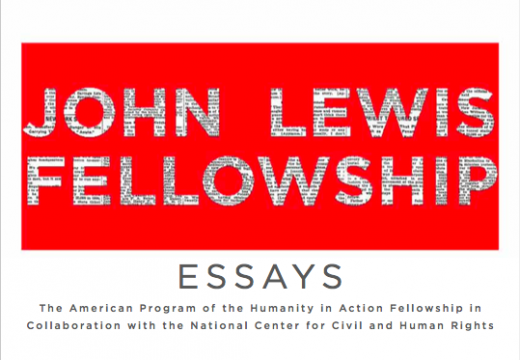Details
Article
When Donald Trump was elected to the 45th President of the United States, I was shocked. An overtly racist and misogynist man surrounded by market fundamentalists and white supremacists will rule the most powerful country of the world for the coming four years? Only a few weeks later, I was impressed and full of hope. I saw thousands of women marching with pink hats for women‘s rights and human rights. I saw volunteering lawyers sitting on the floor of JFK Airport and writing complaints against the discriminatory Muslim ban and masses of people protesting in front of the airports. And I saw the emergence of socialist ideas that did not come to an end after Bernie Sanders had lost the Democratic Party primaries. In short, I saw a diverse and critical civil society starting to fight human rights violations committed or announced by the new administration. I wanted to learn more about this highly polarized country. I wanted to study its history and learn how the country deals with it today. And I wanted to get inspirations for social movements in Europe. The John Lewis Fellowship of Humanity in Action and the Center for Civil and Human Rights provided a unique opportunity to do so.
Past human rights violations…
The history of the United States is a history of violence.
The history of the United States is a history of violence. The so called discovery and settlement of the continent went hand in hand with the displacement and oppression of Native Americans. Since the 17th century, African people have been captured and traded as slaves. In the Civil War slavery was defeated to a large extend, but not racism. Former slaves were exploited as share croppers and faced terror by the Ku Klux Klan and other white supremacists. The southern states left no stone unturned to exclude black people from voting. Jim Crow laws led to racial segregation in many states, justified by the doctrine of separate but equal, although living conditions were anything but equal. The Appeal for Human Rights written by black students from Atlanta 1960 set out the grievances black people were suffering from: They had to attend underfunded schools and hospitals, live in undesirable and overcrowded areas, were partly excluded from public transportation, restaurants and cinemas and were disproportionately maltreated by law enforcement officers.
…and contemporary challenges
The structural discrimination and oppression has continued until today in a different outfit. Even though slavery has been officially abolished, it is still reality in the prison-industrial complex that is targeting blacks disproportionately. Segregation is no longer required by law but perpetuated by a economic and social system with low social mobility. Black people are not disenfranchised as obviously as they used to be but the allegation of voter fraud is still used to restrict voting rights and manipulate election results, as pointed out by Carole Anderson in her book White Rage: The Unspoken Truth of Our Nation’s Divide.
In Atlanta, racial disparities become evident in different ways. People of Color predominantly live in the south of the city which is characterized by inadequate infrastructure and bad transport connection. Since many people cannot afford a car, they are more unlikely to find a job. Since education funding depends on the local tax income, schools in predominantly black areas lack qualified teachers and adequate learning material.
The struggle for justice…
Roslyn Pope who authored the 1960 Appeal for Human Rights and was treated with hostility for this by the Governor of Georgia answered the question of what restorative justice means to her, that it is crucial for her to dismantle these inequalities. Rather than asking individual reparations, she demands acknowledgement of past human rights violations and dismantling present injustices.
Rather than asking individual reparations, she demands acknowledgement of past human rights violations and dismantling present injustices.
This will not come overnight, but needs hard efforts and civic engagement. Looking back over history is very helpful for this: By knowing it, we can avoid future errors and we can learn from those who have fought against injustice back then. Their activities and strategies can serve as a source of inspiration and motivation for today’s generation. To put it in the words of Judith Goldstein, the Executive Director of Humanity in Action: “History is one of the greatest ventures of the human mind and a basic human need. It is a discipline for understanding the past; an investment we make in recording the course of human and natural events; a mechanism to help us know who we were, who we are, how to make sense of the world we live in and how we prepare for the future.”
Studying history also means to seek the dialogue between generations, as has been made possible during the program. The talks and discussions with Roslyn Pope, Lonnie King and Charles Black were unique opportunities to learn from veterans of the civil rights movement. Instead of resting on their well-deserved laurels, they assisted a new generation of human rights activists in releasing a new Appeal on Human Rights in 2017.
…and the role of law
For me as a lawyer, the role of law in the struggle of justice is of particular interest. It seems astonishing at first glance that the first judgments against Jim Crow laws were already handed down in the 1940’s. The Supreme Court Decision Brown v. Board of Education that overruled the separate but equal doctrine was a milestone in the struggle against racial segregation. However, it was to take years until these judgments were implemented. This shows that we should neither underestimate the value of the government’s adherence to the law nor take it for granted. And it shows that social change cannot be achieved solely through litigation.
We should neither underestimate the value of the government’s adherence to the law nor take it for granted.
Law is always the product and expression of social contradictions. It is always both instrument of power, by veiling and securing domination, and a potential means of emancipation. The limits of law become clear, when we have a closer look at the recent Supreme Court jurisprudence regarding for example disparate impact based on race, affirmative action, voting rights or the prosecution of police brutality. Natsu Saito, Professor ar Georgia State’s College of Law, concludes that “there is little to indicate that the Constitution’s guarantees of due process and equal protection, or the protections it provides those suspected of criminal activity, will effectively redress the racial disparities and injustices that continue to characterize American society.”
Nonetheless, the legal system and the courts offer a forum to address and scandalize social grievances. Therefore, I appreciate the work of activist attorneys and legal scholars such as Thurgood Marshall or Pauli Murray during the civil rights movements and today’s organizations like the Georgia Justice Project, the Center for Access to Justice or the Southern Center for Human Rights. Regarding the use of criminal law, it is crucial to note that punishment and revenge is not the goal. The German lawyer Fritz Bauer, who has been persecuted by the Nazis and was later the driving force behind the legal reconditioning of crimes of that time, stated in 1961: “But you have to make yourself aware that these trials don’t serve revenge and retaliation. For us the idea is fundamental that we make the past transparent and contribute to Germany’s history. Herein lies the deeper sense of all these trials.” The same is true regarding the reconditioning of violence against the civil rights movements and police brutality of today.
Moving on
The John Lewis Fellowship was a unique experience. I was able to get an insight into the US history and its current challenges. The engagement and ideas of former and current human rights activists are a priceless source of inspiration that I want to use in my future human rights activities – in and outside the courtrooms.


